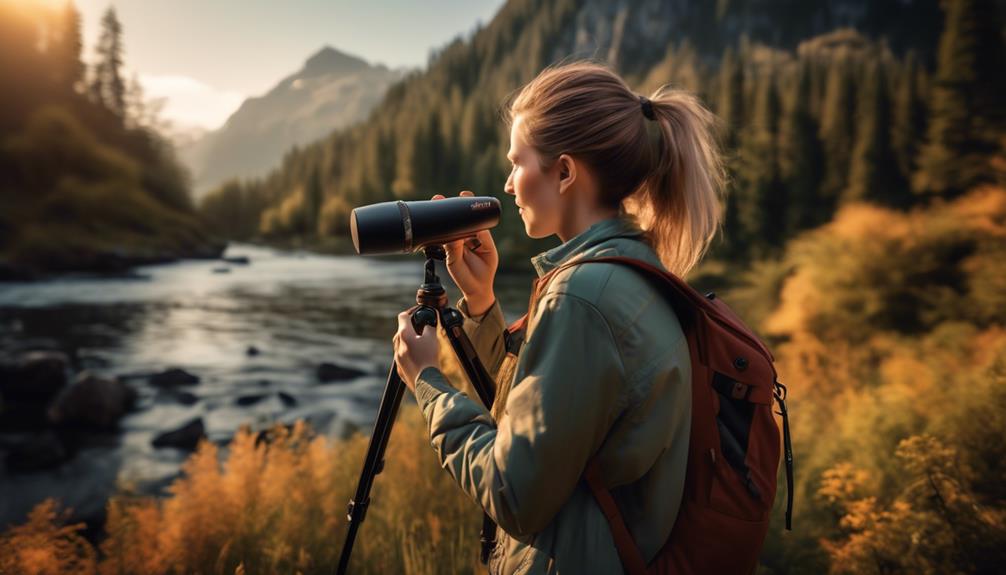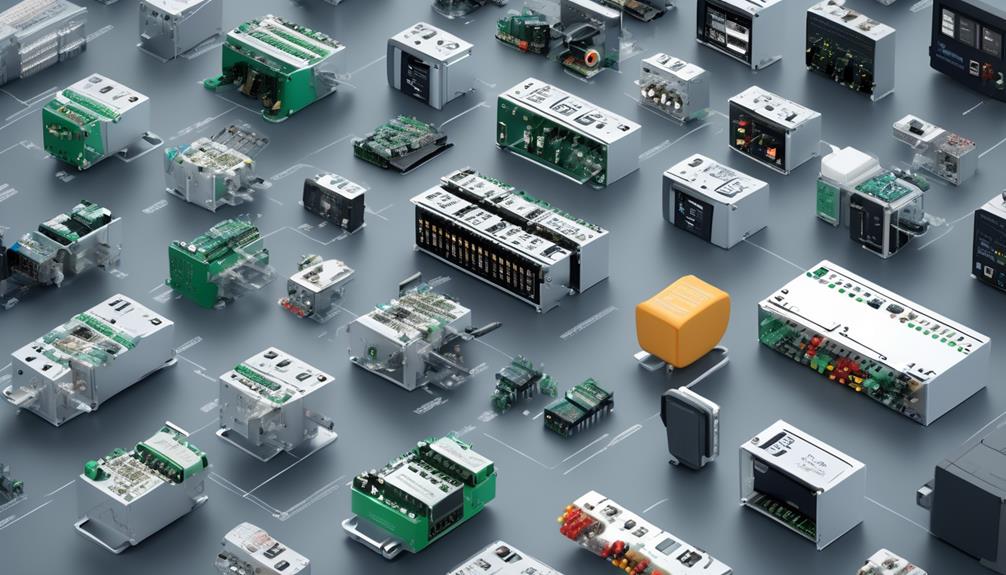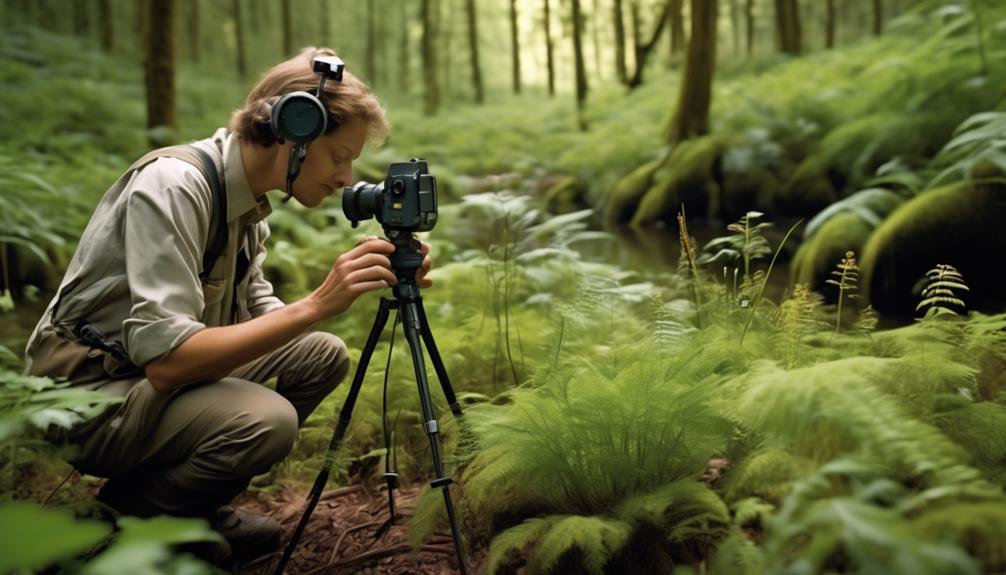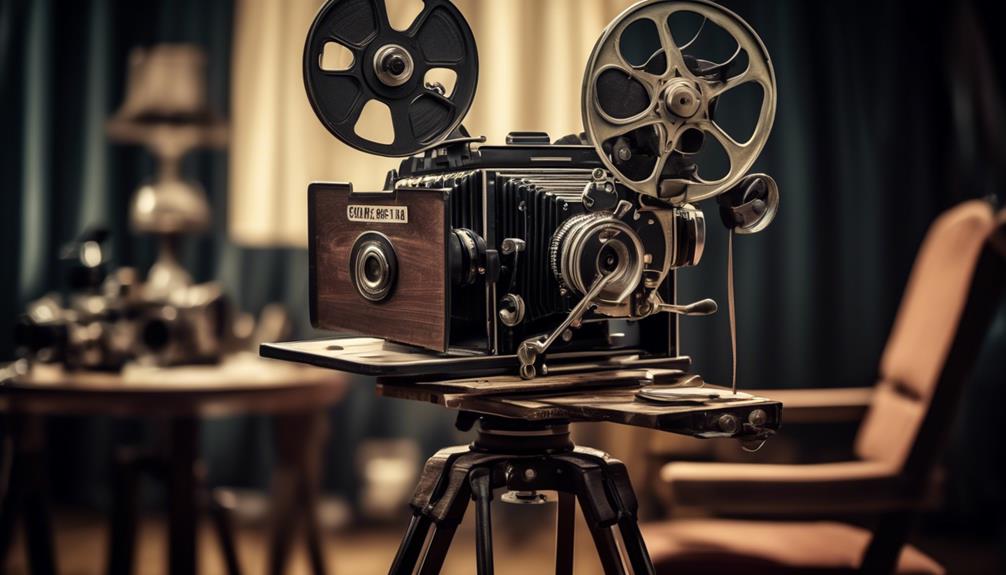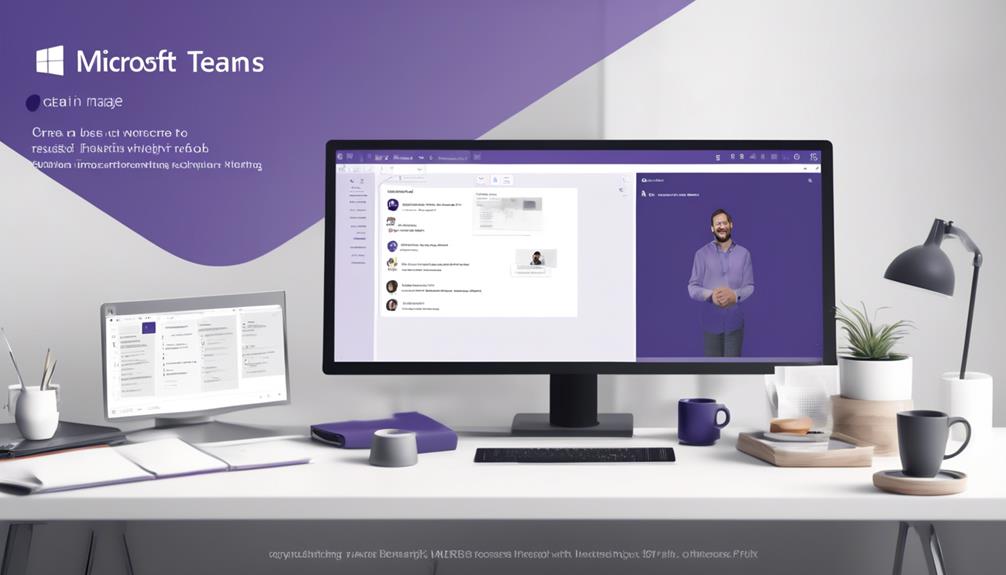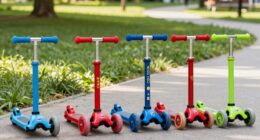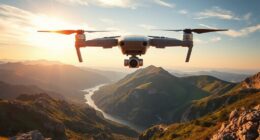Field recording, a captivating blend of art and sound, provides an opportunity to capture intriguing and engaging audio. But how does one get started?
From choosing the right equipment to mastering environmental sound control, there are numerous elements to consider.
As we explore the nuances of field recording, we'll uncover the essential techniques and equipment needed for pristine audio capture in diverse settings.
Join us as we unravel the mysteries of this captivating craft and discover how to elevate your recordings to new auditory heights.
Key Takeaways
- High-quality equipment is essential for field recording, including a reliable field recorder and external microphones.
- Techniques such as using headphones, wind protection, and deep listening can help capture pristine audio.
- Environmental sound control can be achieved through the use of headphones, windjammers, and experimental interactions with sound sources.
- Mobile devices can be utilized for convenient on-the-go recording, with attention paid to optimizing sound quality and positioning.
Essential Equipment for Field Recording
When embarking on field recording, it's essential to equip ourselves with the necessary tools to capture high-quality audio in diverse environments.
The primary equipment for field recording includes a reliable field recorder, high-quality external microphones, wind protection to mitigate wind noise, and essential accessories such as headphones, stands, grips, cables, and memory cards.
A suitable field recorder is pivotal for achieving good quality and high-quality field recordings. Options range from beginner-friendly devices like the Tascam DR-05X to more advanced choices such as the Zoom H4n Pro or the Sound Devices MixPre-6 II.
Additionally, incorporating external microphones like shotgun microphones or RDE NTG-1 can significantly enhance the quality of voice recordings and natural sounds.
Wind protection, through the use of windshields and blimps, is crucial to prevent unwanted noise interference, ensuring high-quality audio capture.
These equipment choices are vital for sound design and producing professional-grade field recordings, enabling us to capture the essence of diverse environments with precision and clarity.
Techniques for Pristine Audio Capture

To achieve pristine audio capture in field recording, it's essential to utilize headphones for accurate sound monitoring and employ specialized equipment such as windjammers and blimps to control environmental sounds.
When recording in the field, the use of headphones is crucial for monitoring the sound in real-time, allowing field recordists to make adjustments and ensure high-quality audio capture.
Additionally, utilizing equipment such as windjammers and blimps helps in managing ambient sounds, preventing unwanted noise interference.
Advanced audio recorders like the Zoom H6 offer XLR inputs, enabling field recordists to connect high-quality microphones for optimal sound capture.
By mastering the art of deep listening, field recordists can capture subtle nuances and variations in sound, resulting in rich and detailed audio recordings.
Moreover, interacting with sound sources through unconventional methods, such as shaking or hitting objects, allows for the creation of unique and captivating audio.
Embracing the versatility of mobile phones as recording devices also provides an accessible means to capture sounds on-the-go, further expanding the possibilities for field recording.
Environmental Sound Control Tips
As we explore environmental sound control tips, mastering the art of deep listening becomes crucial for capturing nuanced audio while employing specialized equipment like windjammers and blimps to manage ambient noise. When trying to record nature sounds, it's essential to understand sound waves and how they interact with the environment, especially in urban environments. To capture high-quality recordings, we must control environmental sounds effectively. Here are some tips to help achieve this:
| Tips | Description |
|---|---|
| Use headphones | Monitor and adjust sound levels for accurate representation. |
| Employ windjammers and blimps | Control environmental sounds by using specialized equipment. |
| Experiment with interactions | Interact with sound sources by experimenting with different interactions and gestures. |
Utilizing Mobile Devices for Recording

Utilizing mobile devices for recording offers an efficient and convenient method for capturing sounds on-the-go with precision and quality. When using a mobile device as an audio recorder, it's essential to pay attention to the sounds directly in front of you to ensure optimal recording. Listening through headphones is crucial for improving sound quality and positioning, as it allows you to adjust input levels based on what you hear. Additionally, interacting with sound sources by shaking, hitting, brushing, or throwing objects can lead to unique and interesting sounds, enhancing the creativity and uniqueness of your recordings.
Controlling environmental sounds is vital, whether you're in the middle of nowhere or a bustling city. Utilize windjammers to prevent wind distortion and consider improvising with curtains, rugs, or props to manage environmental noise.
When it comes to gear, starting with reliable options like Zoom H1 or Tascam DR-05 provides a good foundation before considering more advanced equipment. These devices offer the flexibility needed to record on-the-go, and with the right techniques and equipment, you can achieve professional-quality recordings using your mobile device.
Post-Production Tips for Field Recording
In post-production for field recording, meticulous organization of recordings through the addition of detailed metadata and adherence to specific file naming conventions is essential for efficient retrieval and management. Properly edited recordings can remove background noise, adjust levels, and apply effects to enhance sound quality. Mixing and layering different recordings can create unique soundscapes and atmospheres for a more immersive experience. Utilizing sound libraries and effects can complement and enhance field recordings during post-production. Experimenting with different techniques such as EQ, compression, and spatial effects can help achieve the desired sonic result.
| Equipment | Features |
|---|---|
| Stereo Mic | Utilizes two microphones to capture a realistic stereo image of the surrounding environment |
| Zoom H1n | Portable recorder with adjustable built-in mics and various polar patterns for versatile field recording |
| Zoom H4n | Offers high-quality recording, adjustable sample rate, and frequency response for professional field recording |
In post-production, using software like Adobe Audition and an audio interface can further enhance and refine field recordings. The careful application of post-production tips can transform raw recordings into captivating audio experiences.
Frequently Asked Questions
How Do You Record in the Field?
We record in the field by prioritizing wind protection, sound isolation, and equipment maintenance.
We navigate remote locations, adapting to seasonal challenges and respecting fieldwork ethics.
Wildlife encounters and natural ambience enrich our recordings, but we minimize environmental impact.
After capturing raw audio, we finesse it through precise audio editing.
Our mastery ensures that our field recordings authentically capture the essence of the environment.
What Do You Need for Field Recording?
For field recording, we need a well-planned equipment setup, considering environmental factors like sound isolation, remote areas, and weather conditions.
Recording techniques should focus on capturing wildlife sounds and selecting the right microphone.
Field location and audio editing are also crucial.
It's important to prioritize gear that facilitates these elements and to continuously refine our approach to achieve high-quality recordings.
What Is the Best Field Recorder for Beginners?
For portable options, we recommend the Zoom H1 or Tascam DR-05 as budget-friendly, entry-level models with essential features and good sound quality.
These options offer easy-to-use interfaces, various microphone options, and multiple recording formats.
To enhance your recordings, consider external accessories like windjammers and XLR inputs for upgrading.
Ensure a longer battery life for extended recording sessions.
What Is the Best Sample Rate for Field Recording?
For field recording, the best sample rate is 48kHz, balancing audio quality and file size. Higher rates capture more detail but need more storage. Lower rates conserve space but might compromise detail. Experimenting with rates helps understand their impact on quality and file size.
Environmental impact, wildlife sounds, and cultural significance influence the choice. Mastery of recording techniques, considering equipment limitations, and historical preservation are crucial in the field recording process.
Conclusion
In conclusion, field recording is an essential skill for capturing the sounds of the world around us.
Did you know that the average human ear can distinguish between 400,000 and 500,000 different sounds?
By honing our field recording techniques, we can capture and preserve the unique sounds of our environment, adding depth and authenticity to our audio projects.
So grab your gear and start recording – the possibilities are endless!

